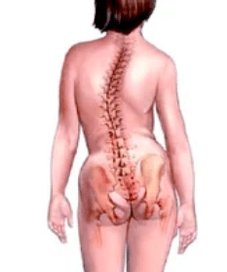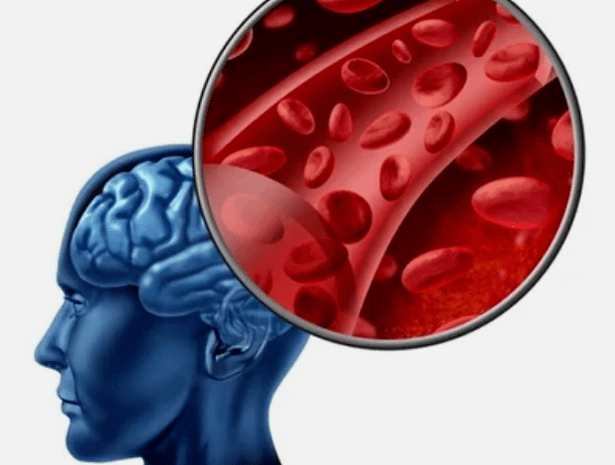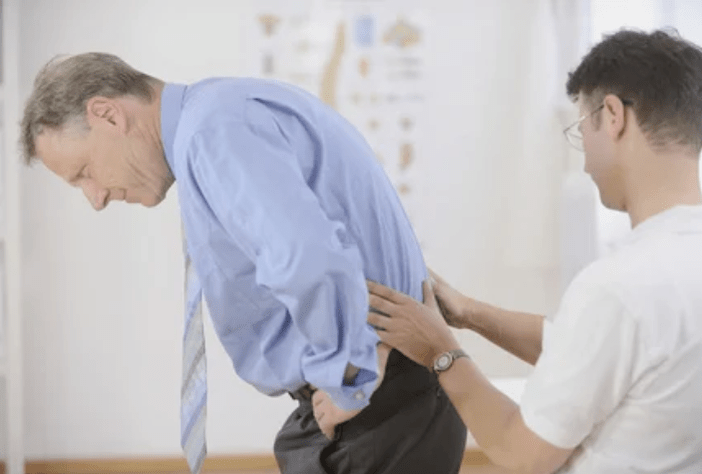The osteochondrosis of the cervical region is a serious pathology, which characterize degenerative-dystrophic changes in the structure of intervertebral discs. This violation often leads to dangerous complications. It is therefore strictly forbidden to ignore. To worn with the disease, you should consult a timely with an expert.

The essence of pathology
Osteochondrosis of cervix is a pathology in which the soft intervertebral pulp turns into bone tissue. This causes a pushing of blood vessels and nerve fibers.
Characteristic disease characteristics include pain syndrome. It is localized in the neck, shoulders, upper back, head. Many patients are faced with dizziness, pressure fluctuations, nausea, lack of air.
Distrophol changes in the area of the cervical region are usually found at mid and older age. This is due to the vertical position of the skeleton and the characteristics of the load distribution.
Doctors note that the disease occurs earlier in men. It happens in 45-50 years. Women face cervical osteochondrose events later - in 50-55 years.
Reasons
Different factors lead to the development of this form of disease. The main causes of cervical osteochondrosis include the following:
- Insufficient physical activity. People who lead an inactive way of life have exhaustion of the back of the rear supporting the spine. The deposition of salt that appear due to lactic acid can worsen this state of affairs. The weakened spinal column is easily deformed and becomes less mobile.
- Obesity. The occurrence of excess weight is a great danger to a muscle-bone system. In addition to increased loads on spine, adipose tissues take over useful substances that are needed to maintain muscle tons of tons and cartilage.
- Long stay in a stationary position. This disease is often found in drivers and people engaged in intellectual work. After an extended stay in a suffocated state, cartilage fabrics gradually lose elasticity. Over time, intervertebral discs acquire unnatural configuration.
- Dietary disorders. In order for the body to work properly, proteins, fats, minerals and vitamins should be present in a diet in sufficient quantities. An irrational diet causes violation of the tissue structure and leads to their rapid destruction.
- Back damage. This can cause pressure redistribution to cartilage, which causes a change in their structure and shape.
- A pathology of a muscle-bone system. This category includes scoliosis, rheumatism, bones tuberculosis.
It is often cervical osteochondrose the result of a hereditary tendency. In this case, pathology is developing without the influence of significant factors.
To prevent disease appearance, you must start therapy in a timely manner.

Stages of the disease
There are several phases of pathology, each of which features certain characteristics:
- The first - the key feature of the state is the instability of the spine. It is manifested in the initial lesions of intervertebral discs;
- Others - the main manifestation is a protrusion. This condition is characterized by reducing cracks between vertebrae, gradual violation of the integrity of the fibrous ring. There are often pain caused by the compression of nerves;
- Third - at this stage is a fibrous fiber ring completely destroyed. This implies the occurrence of intervertebral hernia. This condition is characterized by serious spine damage;
- The fourth is the hardest. Acute pain appears at this stage. Sometimes the situation improves, but this indicates the appearance of bone structures that connect the vertebrae. This implies a reduction in motor activities and causes disability.
Symptoms
This form of osteochondrosis is characterized by special events. This is due to the close location of cervical vertebrae and low disk heights. Therefore, even small changes cause serious manifestations. In addition, this form of osteochondrose often monitors the compression of cerebrospinal roots.
Symptoms of cervical osteochondrosis include the following:
- Pain. They are localized in various areas - rear of head, neck, carrier, hands. Discomfort in hands or on the shoulder is due to the spraying of nerves. Cheese pain in the occipital area is associated with the cramps of muscle tissue disorders of neck and circulation.
- Weakness in their hands. This sign is due to damage to motor nerves responsible for innervation of the arm muscles.
- Weakening sensitivity in their hands. This feature is due to root damage, which include sensitive fibers responsible for inservation of the skin's skin.
- Reducing the motor activity door, the appearance of crumbs. Such symptoms of osteochondrose cervical spine are becoming the result of reducing disk height. They were also defeated by intervertebral joints and form the growth of bones on the vertebrae.
- Weakness, loss of movement and dizziness coordination. These events arise due to damage to vertebral arteries. The formation of fibrous tissue and the jerk of vertebrae causes problems with blood flow in the arteries. As a result, there is a deterioration in blood flow in the occipital area of the brain and cerebellum.
- Hearing worsening, tension, weakening of vision sharpness. These symptoms of osteochondrosis of cervical spine are due to the deterioration of the situation and advancement of cerebral circulation disorders.
Diagnostic methods
To identify the osteochondrose of the door, you must perform a number of diagnostic procedures.Most informative studies include the following:
- Magnetic resonance imaging is the most prominent study that allows you to assess the condition of vertebrae and disks between them. Also, with the help of this procedure, it is possible to reveal hernia, assess their size and localization.
- X -RAY - This procedure is one of the most favorable research methods. However, it often becomes unconformative, especially in the last phases of the disease.
- Calculated tomography - allows you to identify the presence of changes in the structure of vertebrae. However, the presence of hernia or the compression of the spinal cord to diagnose this way is quite difficult.
- Duplex ultrasound scan - helps to detect blood flow disorder in the vertebral artery. The procedure allows you to detect obstacles and slow down blood flow in boats.
Methods of treatment
Treatment of cervical osteochondorosis was selected taking into account different factors. This is done depending on the disease phase, disease form, the weight of the symptoms.
Key therapy methods include the following:
- Conservative therapy - can be drugs and untrue;
- Surgical intervention;
- A combination of conservative methods and surgical treatment.
Physiotherapy methods
Treatment of osteochondrose The cervical spine necessarily requires the use of the main methods of physiotherapy.
The most efficient procedures include the following:
- Electrophoresis using drugs. Under the influence of electricity, drug particles penetrate the desired area. Eulfilin and Novokain are used for the procedure. Thanks to that, it is possible to encourage blood circulation and achieve an analgesic effect.
- Ultrasonic exposure. Thanks to this procedure, it is possible to deal with pain and stop inflammation. This technique also activates metabolic processes in the body.
- Magnetotherapy. With its help, it is possible to deal with the edema and achieve analgesic effect.
- Laser exposure. This method helps the normalization of blood circulation and helps facing inflammation.
The most efficient exercises should include the following:
- Lie on your stomach, rest your hands on the floor, raise your head and torso. It is worth ensuring that the back stays straight. In this position, it is necessary to stay for 1-2 minutes. Then it sinks carefully to the floor. Make 2-3 reps.
- Lie on your stomach, stretch your hands, turn your head to the left side and touch your ear to the floor. A similar movement to perform the right. Enter 6-7 times in each direction.
- Sit down and, inhale, Saviki. Tap your chest with a beard. Then exhale, step back, throwing your head back. Perform 10-15 reps.
- Sit down, put your palms on your forehead. Press your head in your hands for 30 seconds. You have to make 2-3 reps in total.
- Slowly turn your head in different directions. You must make 10 rotations in each direction. When dizziness appears, the exercise must be stopped.

Massage
To remove cervical osteochondrose characters, you should definitely make a massage. The procedure must be performed that carefully, without entering effort. The movements should be extended to the neck, a place of collar and the back.
It is best to make a massage in a lying position on your stomach.In extreme cases, a seat is allowed.
The technique is based on the use of such techniques:
- Gramming - implies impact on skin areas. To do this, palms of your arms or fingers need to hit your back, cross the head to the upper third back. You can also make zigs cans.
- Solid - consists of effects on deep skin parts in the upper third of the back. To do this, with your thumb and forefinger, the skin is trapped. This should be done very carefully, without influence on fabrics in the area of vertebrae.
- Rubbing - the procedure is done to warm up the skin and increase blood circulation in the collar region. It should be done very carefully, without influence on sty style vertebrae.
- Creaming - is quite rarely, because it implies an effect on deep-seated fabrics. This can only worsen an anomaly.
With osteochondrose, self-consideration can be performed.To do this, it is appropriate to sit and use the caress methods and rubbing of neck and shoulders. It is advisable to supplement the process by rubbing fat that contribute to increasing blood flow and relieve pain in the affected area.
Surgical treatment
The implementation of surgical intervention is presented in the following cases:
- The presence of neurological deviations is a violation of motor activity, weakness or loss of hand sensitivity, loss of control over defecation. When such symptoms occur, you can doubt permanent damage to nerves. Therefore, it is so important to perform an operation to remove compression.
- The presence of constant pain, which violates the quality of life life and cannot be eliminated by conservative methods.
With the development of cervical osteochondorosis, the following operations can be performed:
- Front cervix discoctomy and spondylodes. The operation is performed through the front surface of the door. The procedure is aimed at removing the affected disk, decompression of nerve fibers and the implantation of a special device for maintaining the desired distance between vertebral.
- Replacing an intervertebral disk. In this case, the affected disk removes, and instead inserts artificially. Thanks to this procedure, it is possible to maintain engine activities.
The implementation of surgical interventions for removing neurological symptoms has high efficiency. According to separate estimates, it is 80-90%. However, such methods are not effective enough when eliminating osteochondrose-related pain.
Possible dangers
Cervical osteochondrose is a serious type of pathology. There are many nerves and pots responsible for brain nutrition in this area. In addition, the vertebra of the cervix fits firmly. Therefore, even small changes in this area caused the squeezing or moving of blood vessels and nerves.
The disorders of the cerebral flow of blood causes the appearance of migraines, vegetascular distinion, hypertension. There is also a risk of problems in the functioning of the respiratory system, heart and blood vessels. Many are upset with hearing, the sharpness of sight decreases, the coordination of the movement is suffering.
In severe situations, cervical osteochondrose causes vertebral artery syndrome. This vessels are responsible for blood supply in cerebelum and oblong brains. With the compression of the artery, there is a risk of the brain of ischemia and the development of a spinal shock.
Also, pathology can cause damage to nerve roots. This manifests itself in the form of growth formation, radiculopathy, loss of motor activity. The hardest consequence of the disease is the compression of spinal cord, which can lead to a fatal outcome.
Prevention
To avoid the development of pathology, it is worth watching simple rules:
- Systematically engaged in sports;
- Eat properly;
- Take vitamin preparations and hondroprotectors who prescribed a doctor;
- Avoid debt stay in an uncomfortable position;
- Use orthopedic furniture;
- Choose clothes and shoes for the season, especially in winter.
Cervical osteohondrose is a rather dangerous disease that can lead to negative health consequences.
To avoid serious complications, you should consult a timely with a doctor and follow its recommendations clearly.

























